🙂 we've all done it.
I assume you've tried cleaning the pot?
How about trying a cap from the wiper to ground, something like a 22uF for starters. It can only not work.
The cap is not a bad idea! It should make the voltage on the wiper change less quickly. I do guess this jittering is just wiper arching (I mean we are all told not to put DC on pots, right Cyrus?).
However, ever since I had the amp the channel matching is not perfect. Apparently it is calibrated at factory but that was 20 something years ago. I found the Maxim DS1882 which has 63* 1dB steps the same as the Cyrus Pre. I could drive it from an Arduino to give the attenuation.
Also, am I right that the capacitor (C311, C312) in the op-amps feedback will be performing a similar function; providing high gain for DC or slow changing signals (i.e. the desired DC voltage) while giving very low gain for quick changing AC signals (arcing)?
Just to educate myself I might try sticking a far bigger cap in the op-amp feedback and see if the potentiometers respond slower.
If you're able to Arduino, then surely you could have a peek at the NVM data, copy it as a backup and then fiddle with the values to see if the calibration lies there.
The data won't have changed (unless the NVM has died partially) , but if it was poorly calibrated then surely it can be adjusted to trim the calibration.
Apparently it is calibrated at factory but that was 20 something years ago
The data won't have changed (unless the NVM has died partially) , but if it was poorly calibrated then surely it can be adjusted to trim the calibration.
No, but the pot track might have worn: on either the position sensing linear track or the level adjusting log track thus throwing out the calibration.
No, but the pot track might have worn: on either the position sensing linear track or the level adjusting log track thus throwing out the calibration.
But that would give you jumpy positioning, cos it can't replicate that resistance level/value.
Worn just gives you crackles, neither would shift the vlaues consistently down or up from where they were originally
Have you tried checking the smoothness of the track(s) of each pot (both the control track and the audio track, with an analogue meter preferably.
Either reading the voltage off the control wiper as you wind it up with it powered up, or just the resistance (with the power off obviously)
Either reading the voltage off the control wiper as you wind it up with it powered up, or just the resistance (with the power off obviously)
The cap is not a bad idea! It should make the voltage on the wiper change less quickly. I do guess this jittering is just wiper arching (I mean we are all told not to put DC on pots, right Cyrus?).
However, ever since I had the amp the channel matching is not perfect. Apparently it is calibrated at factory but that was 20 something years ago. I found the Maxim DS1882 which has 63* 1dB steps the same as the Cyrus Pre. I could drive it from an Arduino to give the attenuation.
Also, am I right that the capacitor (C311, C312) in the op-amps feedback will be performing a similar function; providing high gain for DC or slow changing signals (i.e. the desired DC voltage) while giving very low gain for quick changing AC signals (arcing)?
Just to educate myself I might try sticking a far bigger cap in the op-amp feedback and see if the potentiometers respond slower.
I think the cap will be to ensure Nyquist stability of some sort... in much the same way as CD player tracking and focus drive amplifiers do. All are systems with a mechanical feedback loop that needs to be made stable.
The voltage on the pot wiper is assumed to be a smooth value but if the pot is dodgy then that is not the case. I would just try it and see. You have nothing to lose by experimenting.
The opamp is a PI controller, the cap defines the integral gain and the resistor in series with it the proportional gain. The zeners provide hysteresis.
In normal operation (with a working pot) the circuit will drive the voltage up until the zeners conduct and smoothly increase motor drive till it turns. When the thing overshoots the resistor is responsible for immediately stopping the motor I think, and then the process repeats, the capacitor acting as an integrator for the error.
This means it should repeatedly readjust by tiny amounts as the error integrates on the cap. Not sure why it was designed that way. Perhaps I'm missing something - perhaps the opamp gain is low enough that the hysteresis on the output is enough to prevent this "hunting" behaviour normally?
You could try adding a high value resistor across the capacitor to reduce the DC gain, perhaps in the 10M region.
[ A theory: deterioration of the feedback capacitor over time could have led to hunting behaviour starting up (I like to think its not meant to), and this wore out the track(s) and made things worse. ]
The integration timescale is about 1.5seconds so you might expect a tiny amplitude of jitter on that sort of timescale I think, micro-movements of the motor only.
With the pot flaky you only have the pin capacitance of the JFET opamp to smooth things out (it would be much worse with a bipolar opamp, note). Try a few nanofarads on the wiper perhaps (JFET inputs are high enough impedance that that ought to be plenty). Do not substitute a bipolar opamp(!)
Anyway I'd check that the 2u2 bipolar caps are good. I don't see any reason to change their value.
In normal operation (with a working pot) the circuit will drive the voltage up until the zeners conduct and smoothly increase motor drive till it turns. When the thing overshoots the resistor is responsible for immediately stopping the motor I think, and then the process repeats, the capacitor acting as an integrator for the error.
This means it should repeatedly readjust by tiny amounts as the error integrates on the cap. Not sure why it was designed that way. Perhaps I'm missing something - perhaps the opamp gain is low enough that the hysteresis on the output is enough to prevent this "hunting" behaviour normally?
You could try adding a high value resistor across the capacitor to reduce the DC gain, perhaps in the 10M region.
[ A theory: deterioration of the feedback capacitor over time could have led to hunting behaviour starting up (I like to think its not meant to), and this wore out the track(s) and made things worse. ]
The integration timescale is about 1.5seconds so you might expect a tiny amplitude of jitter on that sort of timescale I think, micro-movements of the motor only.
With the pot flaky you only have the pin capacitance of the JFET opamp to smooth things out (it would be much worse with a bipolar opamp, note). Try a few nanofarads on the wiper perhaps (JFET inputs are high enough impedance that that ought to be plenty). Do not substitute a bipolar opamp(!)
Anyway I'd check that the 2u2 bipolar caps are good. I don't see any reason to change their value.
Are there schematic diagrams available ?
In the attachment some images together with the PSX outdoor power supply
On the web I have found this (5 pages):
DIY digital volume control for Cyrus Pre
http://www.awiller.de/main/index.ph...ask=view&id=48&Itemid=56&limit=1&limitstart=0
http://www.awiller.de/main/index.ph...ask=view&id=48&Itemid=56&limit=1&limitstart=1
http://www.awiller.de/main/index.ph...ask=view&id=48&Itemid=56&limit=1&limitstart=2
http://www.awiller.de/main/index.ph...ask=view&id=48&Itemid=56&limit=1&limitstart=3
http://www.awiller.de/main/index.ph...ask=view&id=48&Itemid=56&limit=1&limitstart=4
http://www.awiller.de/main/index.ph...ask=view&id=48&Itemid=56&limit=1&limitstart=5
In the attachment some images together with the PSX outdoor power supply
On the web I have found this (5 pages):
DIY digital volume control for Cyrus Pre
http://www.awiller.de/main/index.ph...ask=view&id=48&Itemid=56&limit=1&limitstart=0
http://www.awiller.de/main/index.ph...ask=view&id=48&Itemid=56&limit=1&limitstart=1
http://www.awiller.de/main/index.ph...ask=view&id=48&Itemid=56&limit=1&limitstart=2
http://www.awiller.de/main/index.ph...ask=view&id=48&Itemid=56&limit=1&limitstart=3
http://www.awiller.de/main/index.ph...ask=view&id=48&Itemid=56&limit=1&limitstart=4
http://www.awiller.de/main/index.ph...ask=view&id=48&Itemid=56&limit=1&limitstart=5
Attachments
-
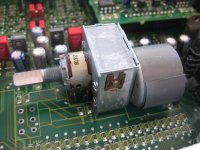 mission_pre_pot.jpg75.4 KB · Views: 70
mission_pre_pot.jpg75.4 KB · Views: 70 -
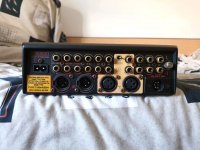 36a31fad-0315-4642-bd69-2fb1ce7e8532.jpg110.9 KB · Views: 66
36a31fad-0315-4642-bd69-2fb1ce7e8532.jpg110.9 KB · Views: 66 -
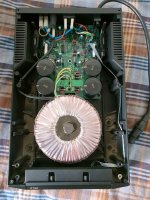 8c88d9cd-8575-4158-bcbc-95ca8d8879cb.jpg147.3 KB · Views: 69
8c88d9cd-8575-4158-bcbc-95ca8d8879cb.jpg147.3 KB · Views: 69 -
 40ff97a5-fc7b-4fe6-954e-2e4f52bc9d1c.jpg135.5 KB · Views: 61
40ff97a5-fc7b-4fe6-954e-2e4f52bc9d1c.jpg135.5 KB · Views: 61 -
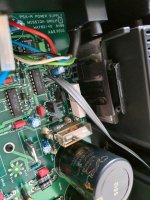 80dab690-9b64-42c0-bb10-dac201c29f08.jpg121.2 KB · Views: 63
80dab690-9b64-42c0-bb10-dac201c29f08.jpg121.2 KB · Views: 63 -
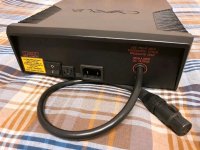 4ba808ad-845f-4dfc-8f88-0abbe643809f.jpg127.5 KB · Views: 61
4ba808ad-845f-4dfc-8f88-0abbe643809f.jpg127.5 KB · Views: 61 -
 e65ae90f-b7ee-4e8a-998e-2720365321c3.jpg95 KB · Views: 57
e65ae90f-b7ee-4e8a-998e-2720365321c3.jpg95 KB · Views: 57 -
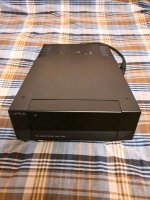 4a3dcd93-70fd-4284-91ab-5aa3cb112e78.jpg111.7 KB · Views: 63
4a3dcd93-70fd-4284-91ab-5aa3cb112e78.jpg111.7 KB · Views: 63 -
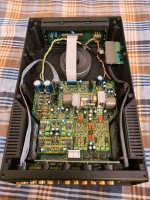 0fe24d15-2bc2-4b44-9fb7-35bb59eaa051.jpg156.9 KB · Views: 71
0fe24d15-2bc2-4b44-9fb7-35bb59eaa051.jpg156.9 KB · Views: 71 -
 8f84e2bc-10a5-4070-b5a5-1acc2a95c4b2.jpg149.6 KB · Views: 67
8f84e2bc-10a5-4070-b5a5-1acc2a95c4b2.jpg149.6 KB · Views: 67 -
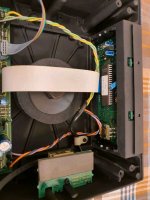 cc0bb23c-7971-415e-adb4-c665c05c11ee.jpg99.1 KB · Views: 66
cc0bb23c-7971-415e-adb4-c665c05c11ee.jpg99.1 KB · Views: 66 -
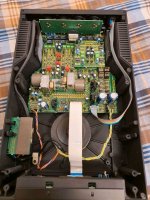 56dd4966-28c3-473e-a1d7-f43100ee89ef.jpg144 KB · Views: 73
56dd4966-28c3-473e-a1d7-f43100ee89ef.jpg144 KB · Views: 73 -
 c8a0d77d-515b-400d-b8cd-d2a9fd72f0e5.jpg123 KB · Views: 59
c8a0d77d-515b-400d-b8cd-d2a9fd72f0e5.jpg123 KB · Views: 59 -
 75d3d73d-2db0-4df3-9721-dba11c6b0d4e.jpg106.7 KB · Views: 67
75d3d73d-2db0-4df3-9721-dba11c6b0d4e.jpg106.7 KB · Views: 67 -
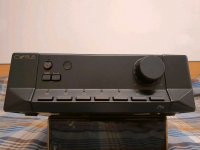 00d1c4d2-d2b8-45f6-9919-6ba0c2cf6af5.jpg59.4 KB · Views: 72
00d1c4d2-d2b8-45f6-9919-6ba0c2cf6af5.jpg59.4 KB · Views: 72 -
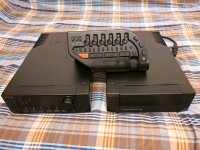 18315464-767a-4f9e-a700-c08a5eba7f7d.jpg125.9 KB · Views: 75
18315464-767a-4f9e-a700-c08a5eba7f7d.jpg125.9 KB · Views: 75
- Home
- Source & Line
- Analog Line Level
- Cyrus Pre HA7L Jiddery Volume?